This is the Kemper Kombi Camera and Graphoscope, an interesting combination box camera and viewer from 1892 manufactured by Alfred C. Kemper in Chicago, Illinois. As a camera, one of the interesting features is adjusting aperture by way of interchangeable plates. It could also take either circular or square photos depending on removable inserts. As a graphoscope the back could be opened and light shone through it to project an image.
As found elsewhere on the web, namely submin.com, the Kombi had several “firsts”:
- The world’s first miniature roll film camera
- The first camera to use film manufactured by Kodak solely for use in a non-Kodak camera
- The first camera to combine the taking and viewing of photographs in the same instrument.
- The first metal-bodied roll film camera
- The first interchangeable back for roll-film cameras
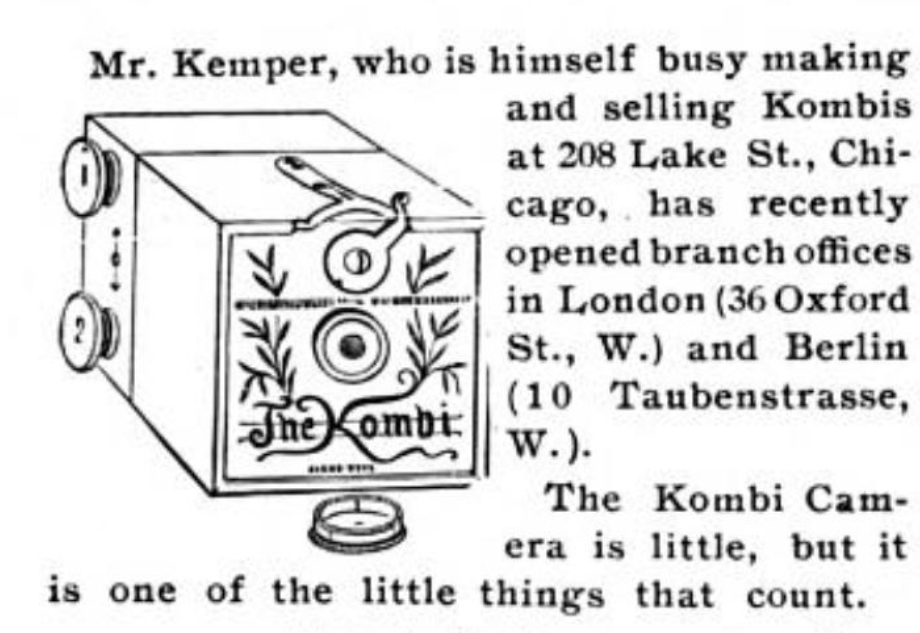
It’s diminutive size and build quality did not go unnoticed at the time. Per the 1895 The Hardware Dealer: There is about it a welcome absence of the cloth bellows parts which distinguish the average camera.
| Make | Alfred C. Kemper |
|---|---|
| Model | Kombi Camera and Graphoscope |
| Year | c1892 |
| Format | 1.5 inch Kodak rollfilm (1 1/8 x 1 1/8 negatives |
| Shutter | non-capping |
| Speed | Single (1/60) |
| Lens | meniscus |
| Focus | 3ft – ∞ |
| Aperture | interchangeable plates |
| Light Meter | No |
| Rangefinder | No |
The back of this particular camera was jammed shut and I just got around to gently getting it open. At first I was thrilled to see a roll of film inside, only to discover it’s just the backing paper, though that will come in handy should I attempt to run a roll through it.
For a more in-depth review, check out Mike Eckman’s write-up of this very camera!

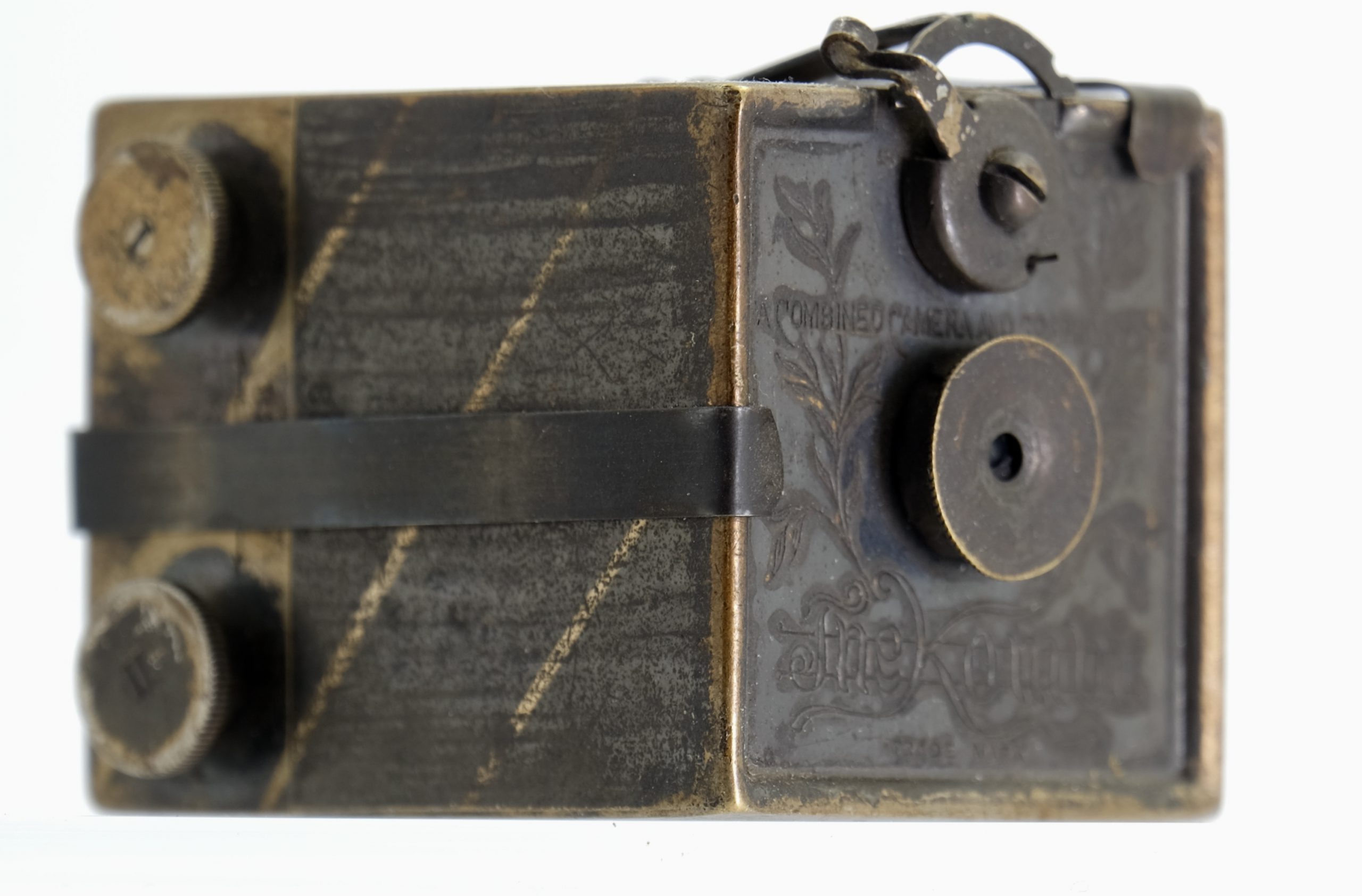

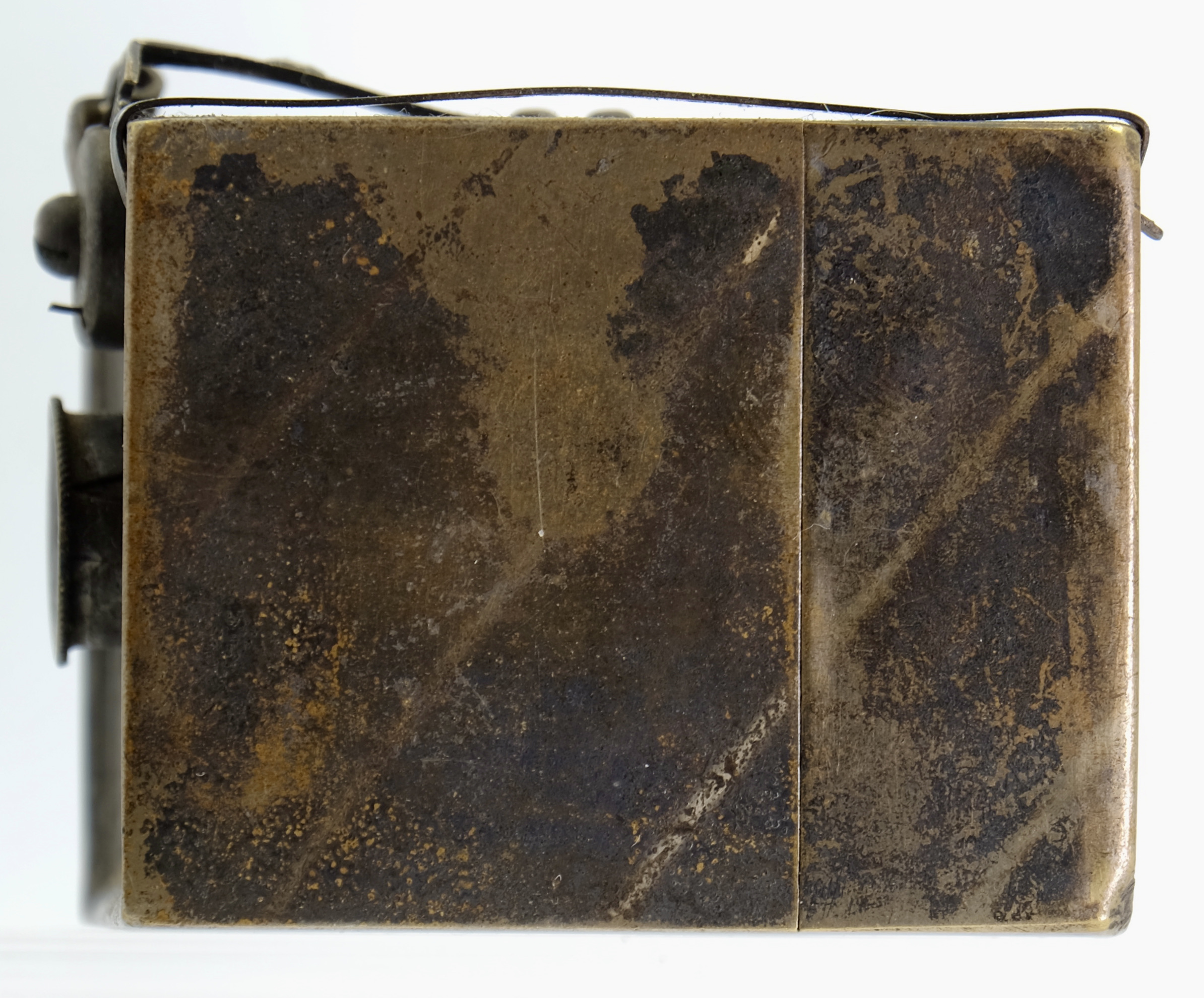
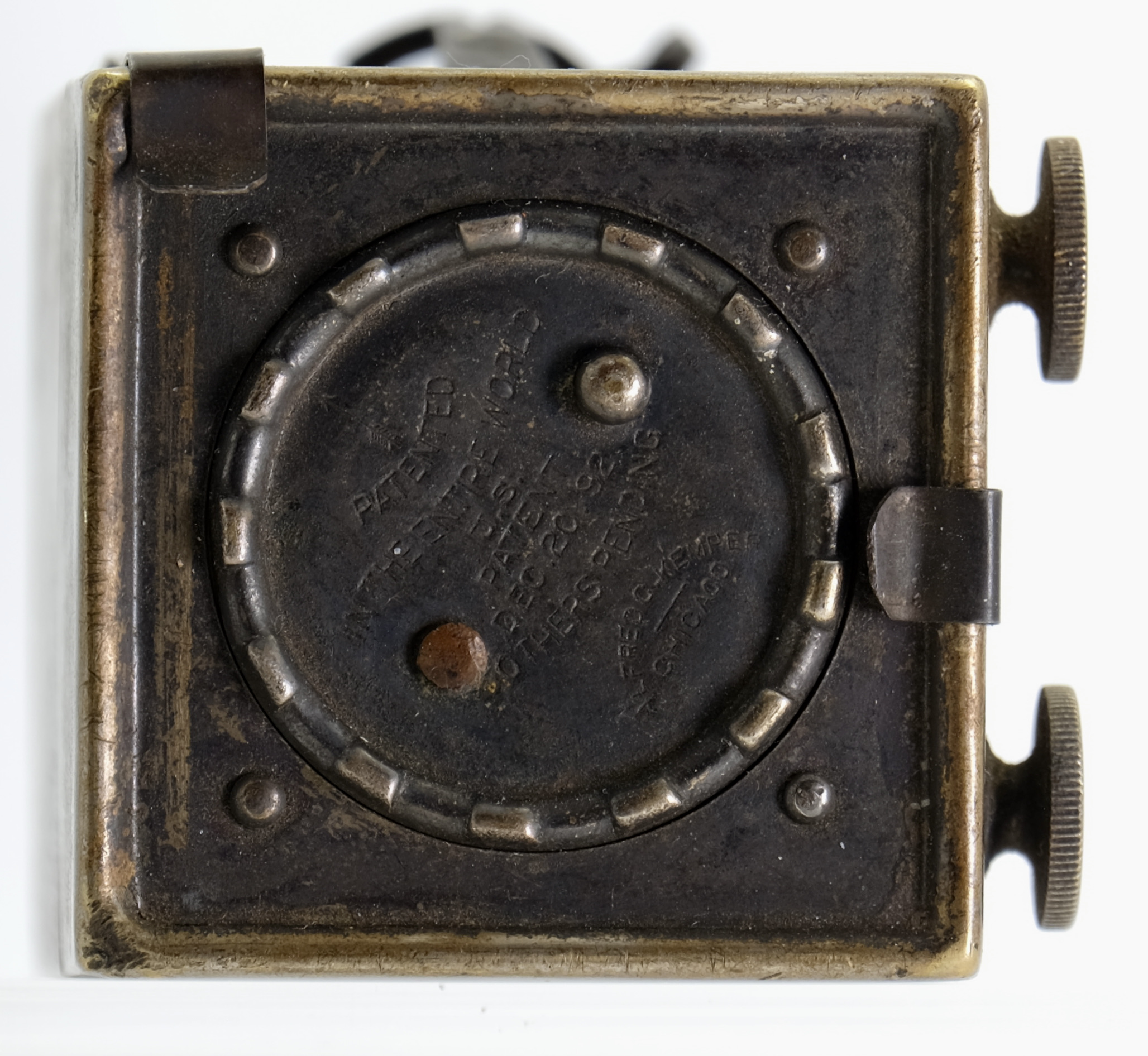

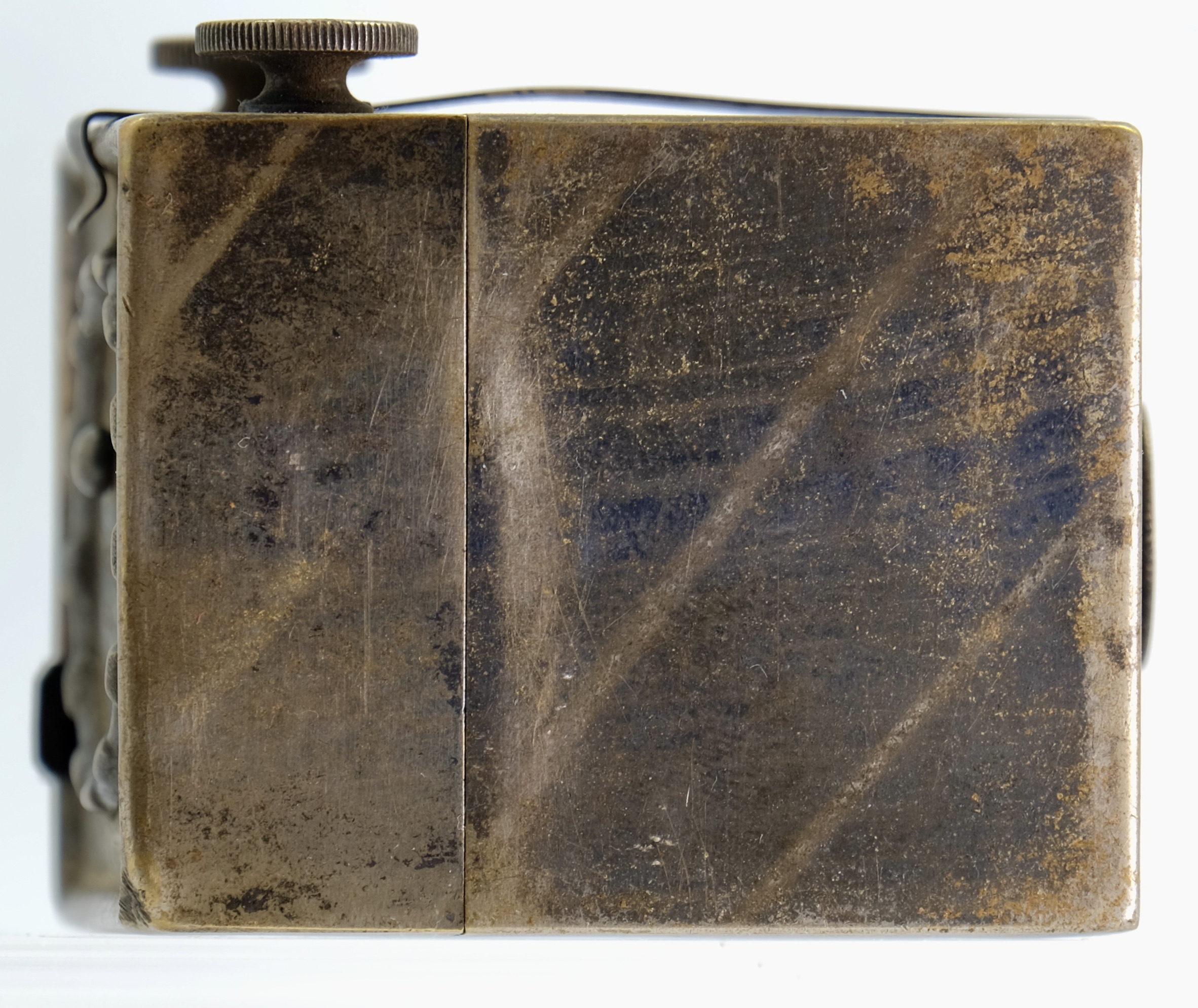

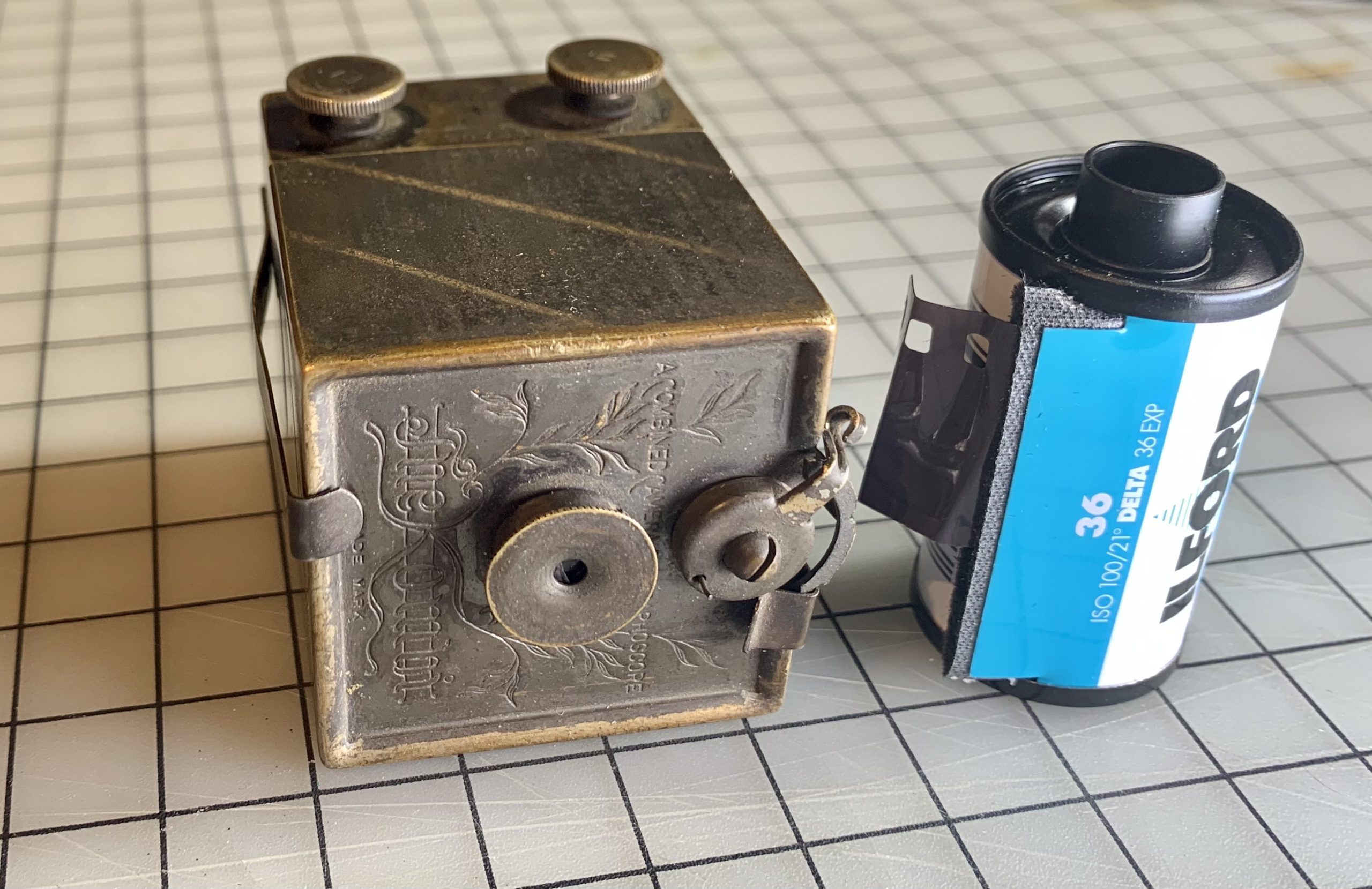
Pingback: Alfred C. Kemper Kombi (1893) - mike eckman dot com